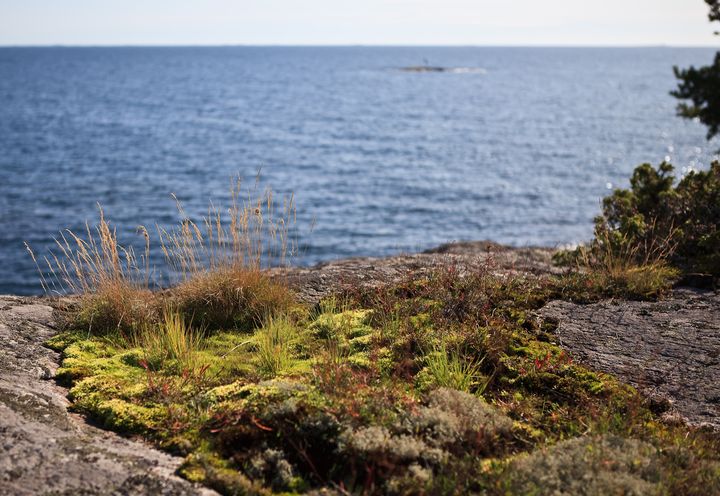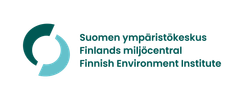Unstable weather has kept the blue-green algae situation calm in lakes, surface blooms observed at sea
Somewhat less blue-green algae have been observed in lakes and coastal areas than last week, but blue-green algae may still appear mixed with water. Cloudy weather has limited satellite observations in sea areas. However, blue-green algae surface blooms have been detected in places south of Hanko in the open sea area of the Gulf of Finland.

Link to the map
Map of the national blue-green algae monitoring observations on week 31
More in Finnish
Epävakainen sää on pitänyt järvien sinilevätilanteen maltillisena, merellä havaittu pintakukintoja
Syke observes the cyanobacteria occurrence as part of the monitoring of the state of the environment in Finland
The national cyanobacterial monitoring is carried out as part of the monitoring of the state of the environment in cooperation with the Centres for Economic Development, Transport and the Environment, municipal environmental and health authorities, and the Finnish Environment Institute (Syke). Finnish Rotary Clubs are also actively involved in nationwide cyanobacterial monitoring.
The cyanobacterial monitoring is based on the monitoring of cyanobacterial deposits in surface water. The intention is to provide an overview of the cyanobacterial situation in different water bodies. The monitoring includes about 400 permanent observation sites across the country on inland and coastal waters and in the archipelago.
Information on the cyanobacterial situation in the open sea areas is mainly obtained from satellite images, but also from the Finnish Border Guard, the marine research vessel Aranda, the optical device located at the Utö Atmospheric and Marine Research Station, as well as cruise and merchant ships (MS Finnmaid and MS Silja Serenade) equipped with Alg@line measuring equipment. The drift forecasts for cyanobacterial rafts in open sea areas are prepared in cooperation with the Finnish Meteorological Institute's Maritime Services.
Syke reports on the national cyanobacterial situation on a weekly basis every Thursday from the beginning of June until the end of August. The weekly algal reporting was launched in 1998.
Several compounds produced by cyanobacteria can cause health hazards
According to the Finnish Institute for Health and Welfare (THL), cyanobacterial occurrences can cause health hazards. Cyanobacteria produce a number of different compounds that can cause symptoms. Some cyanobacteria can produce liver or nerve toxins, but most of the symptoms experienced by swimmers may also be due to other compounds.
Small children and pets should particularly be kept out of water rich with cyanobacteria. Water with cyanobacteria should not be used in a sauna or as washing or irrigation water.
If you suspect a poisoning, seek medical advice, or take the pet to a veterinarian. If necessary, the Poison Information Centre will provide additional instructions.
The municipal health authorities monitor the cyanobacterial situation on beaches.
More information about blue-green algae and health:
- At the the Finnish Institute for Health and Welfare (THL) website
- At the Poison Information Center website
Report your cyanobacterial observations to the Järvi-meriwiki (Lake and sea wiki)
In Järvi-meriwiki, maintained by the Finnish Environment Institute, you can establish your own observation site and share cyanobacterial observations or make individual observations when moving around waterways. You can also report observations via the smartphone-friendly Havaintolähetti website.
The reported observations are shown on the national cyanobacterial observation map, and they support the national algal situation assessment. Observations about the absence of cyanobacteria are also important.
Järvi-meriwiki is an online service produced in collaboration with authorities and citizens. The service provides basic information on all lakes larger than one hectare as well as different areas of the Baltic Sea. Users can share, for example, photos and other observations on the service.
Municipalities and cities monitor the cyanobacterial situation on the beaches, so it is advisable to report rich cyanobacterial occurrences on beaches to the health authorities of the municipality in question.
This is how you identify cyanobacteria
A small amount of cyanobacteria in the water appears as green or yellowish particles. Narrow stripes of algae can drift to a beach. In calm weather, a substantial amount of cyanobacteria forms greenish or yellowish algal rafts and piles up in coastal water. In spring, yellowish pollen from coniferous trees may also be present in the water. Unlike cyanobacteria, pollen is found not only on the surface water but also, for example, on piers or yard furniture.
Cyanobacteria dissolve into tiny particles in the water if you touch the algal mass with a stick. If the algae become attached to the stick, they are something other than cyanobacteria. In a water vessel, cyanobacteria rise to the surface as tiny greenish particles within about an hour.
- Read more: How do you recognize blue-green algae?
Cyanobacterial observations also in the MarineFinland.fi and Waterinfo.fi services
The cyanobacterial maps presented on the websites MarineFinland.fi and Waterinfo.fi combine the observations reported to the Järvi-meriwiki and from the beaches of the City of Helsinki, as well as the observations based on satellite interpretations made by Syke during the last three days.
Keywords
Contacts
Inquiries about blue-green algae situationTelephone 1 pm to 3 pm
Lakes: Tel +358 50 5734 347 or +358 295 251 326
State of the Baltic Sea: Tel +358 50 5693 297 or +358 295 251 314
Satellite observations: Tel 358 50 4707 576 or +358 295 251 329, e-mail: Eotuki@syke.fi
Tytti JuustiCommunications Intern
Tel:+358 295 252 323firstname.lastname@syke.fiEija JärvinenCommunication Specialist
Tel:0295 251 242firstname.lastname@syke.fiLinks
It is time to move beyond solving environmental problems one by one, to systemic sustainability transformations. The Finnish Environment Institute (Syke) contributes to building a sustainable society through research, information and services. The Finnish Environment Institute is a research institute with 700 experts and researchers located in Helsinki, Oulu, Jyväskylä and Joensuu.
Subscribe to releases from Suomen ympäristökeskus
Subscribe to all the latest releases from Suomen ympäristökeskus by registering your e-mail address below. You can unsubscribe at any time.
Latest releases from Suomen ympäristökeskus
Finnish Ecosystem Observatory makes nature data accessible to all22.4.2024 15:13:39 EEST | Press release
The significance of nature data in society has grown significantly in recent years, as decision-making often requires more accurate, up-to-date, and diverse information about nature. The Finnish Ecosystem Observatory project has responded to society's information needs by, for example, building the Finnish Nature Information Hub website. In addition, a group bringing together different organisations has been established to coordinate nature information.
Viikkokatsaus 22.–26.4.202422.4.2024 14:11:46 EEST | Tiedote
Hei! Tässä tiedoksesi meillä Suomen ympäristökeskuksessa tällä viikolla ilmestyviä tiedotteita, uutisia, kampanjoita, blogeja ja uutiskirjeitä. Mukana myös tulevia tapahtumia ja webinaareja. Jakelemme viikkokatsauksen maanantaisin STT:n kautta. Koosteet löytyvät myös STT-uutishuoneesta, josta voit tilata kaikki Suomen ympäristökeskuksen tiedotteet.
Finlands ekosystemobservatorium gör naturinformationen tillgänglig för alla22.4.2024 12:50:17 EEST | Tiedote
Behovet av naturinformation i samhället har de senaste åren ökat kraftigt, eftersom beslutsfattande ofta kräver allt mer exakt, aktuell och mångsidig information om naturen. Inom ramen för det finska ekosystemobservatorieprojektet har samhällets informationsbehov bland annat mötts genom att bygga en gemensam och omfattande plattform, Luontotieto.fi. Dessutom har projektet lett till att en samordningsgrupp för naturinformation har bildats, vilket tidigare inte funnits i Finland.
Luonto koetaan tärkeäksi arkimaisemissa22.4.2024 09:54:55 EEST | Tiedote
Maisemat vaikuttavat ihmisten hyvinvointiin, arvioivat lähes kaikki valtakunnalliseen maisemakyselyyn vastanneista. Tyytyväisyyttä omiin arkimaisemiin tuovat erityisesti vesien ja metsien läheisyys. Useimpien mielestä maisemat tulisi ottaa päätöksenteossa nykyistä paremmin huomioon niin kaupungeissa kuin maaseudullakin.
Naturen upplevs viktig i vardagslandskap22.4.2024 09:54:39 EEST | Tiedote
Landskap påverkar människors välbefinnande, enligt nästan alla som svarade på en riksomfattande landskapsundersökning. Särskilt nöjda är de med närheten till vatten och skogar i sina vardagslandskap. De flesta anser att landskapen bör beaktas bättre i beslutsfattandet både i städerna och på landsbygden.
In our pressroom you can read all our latest releases, find our press contacts, images, documents and other relevant information about us.
Visit our pressroom